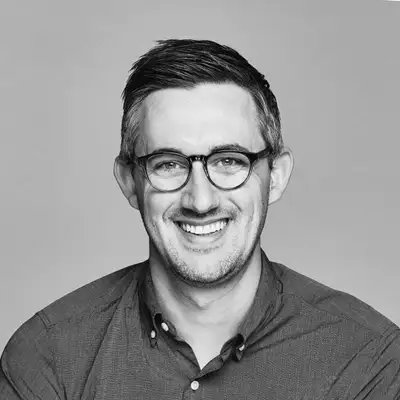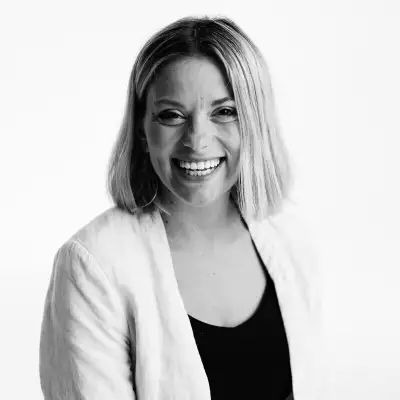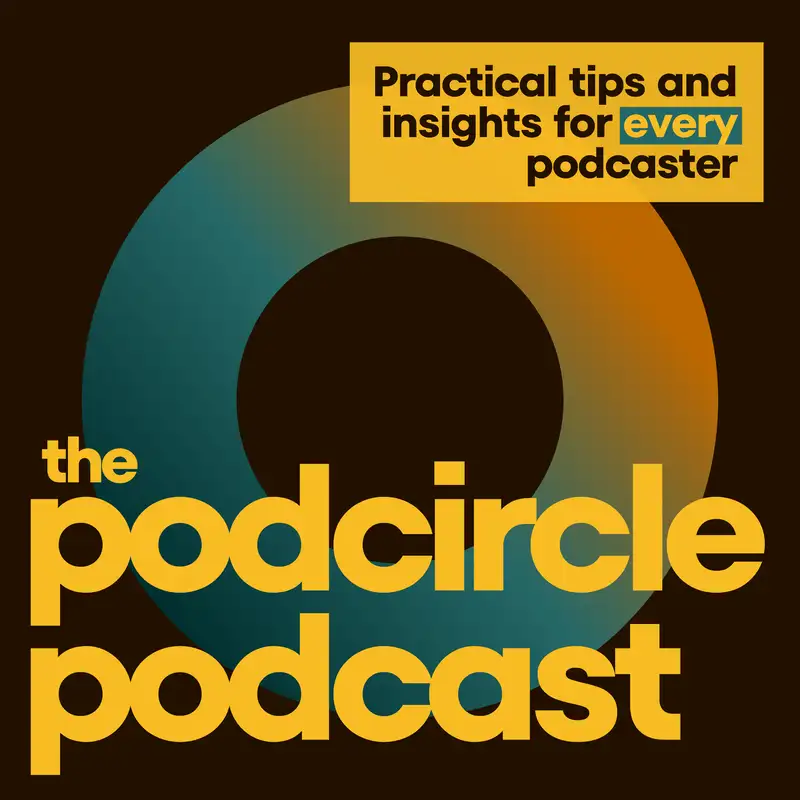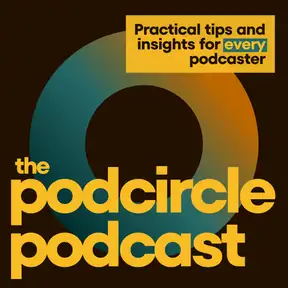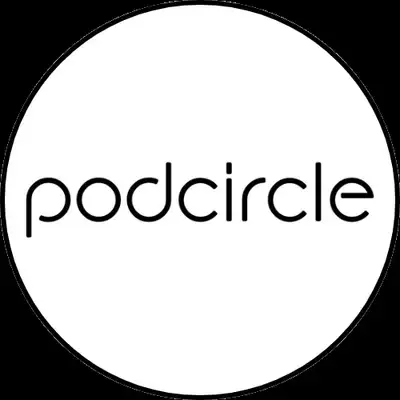7. Recording Equipment - Part 2
Welcome to the Podcircle podcast where we bring practical tips and insights for every podcaster.
Kyle Cummings:From aspiring podcasters to experts with 100s of episodes under your belt and everywhere in between, these conversations dive into the topics that matter most to you.
Mickenzie Vought:Alright, Kyle. It is time for part 2 of this conversation about about recording equipment. And as I said in part 1, this is a topic that I feel like is a barrier for a lot of people because it was a barrier for me when I first started podcasting. And you assuaged a lot of my fears and came alongside me and have taught me so much in being in friendship with you. So I'm so grateful for that, and I'm grateful that you are my podcast editor.
Mickenzie Vought:But let's talk to those people that wanna have a hybrid recording situation. So we have talked a lot about remote podcast and how so many people are moving in that direction. So let's say that they wanna set up a space for both in person, but then also when they've got a remarkable guest that they can only do a remote interview with, they have the capability to do that too. So what are the different setups that you can create?
Kyle Cummings:Yeah. Totally. It's a great distinction. So remote versus in person for the longest time. Sometimes a podcaster would have to have 2 completely separate rigs.
Kyle Cummings:Companies like Shure with the advent of the MV7 USB microphone are really starting to close that gap and make things more simple so that you don't have to have a USB mic and then, what I'll call an XLR mic that just has a traditional mic cable. So Okay. With the Shure MV7 which we have linked in the show notes, you can record in person and remotely via just hooking it up USB to your computer, which is fantastic. We're gonna talk about in person recordings because we've covered the remote recordings. It's really simple if you wanna do a Riverside call or a Zoom call, just plug that mic USB in your computer.
Kyle Cummings:It's it's very, very simple. Now if you want to be able to record in person and say you're gonna have multiple mics, you may even have multiple, of this mic of the Shure MV7 or maybe an additional handheld mic. You're gonna need some additional gear. So we're gonna talk about that as briefly as I can here. For most podcasters in this situation, I'm going to recommend a device, a handheld portable recording device called a Zoom PodTrak P4.
Kyle Cummings:That's certainly not the only one in the market. Zoom makes some other devices. But I think for what this device does, it's all in one. You can plug headphones into it and monitor your levels. It's it's really fantastic.
Kyle Cummings:And then it comes with an SD card. So it's like recording directly to a hard drive. In this case, just an SD card. And it's all in in one box. And then you can also plug that device into your computer and transfer those files over to your podcast editor.
Kyle Cummings:I just like that it's it makes it very simple and keeps it all kind of housed in one place, and they're very reliable devices. And you can with the PodTrak p 4, you can actually plug up to 4 microphones into that device, and you can also plug 4 sets of headphones into it so that everyone can hear themselves, which is and you everyone has their own discreet headphone volume. It's just it's fantastic. It's made for podcasters. So there's a bit about that.
Kyle Cummings:Did you have a a question, Mickenzie?
Mickenzie Vought:Yeah. I've had a couple different setups in my time in doing in person interviews. One of them, we had to have a computer to go with it, and the other one recorded directly into the mixer. So what does this one do? Do you have to have a computer?
Mickenzie Vought:It records directly to the SD, then do you put it in a computer? What does that look like?
Kyle Cummings:Yeah. So and that's a great question. So there's the the other option there. Say if you don't wanna invest in one of these devices, it's just to have Yeah. A stand alone recording device called a recording interface.
Kyle Cummings:These are popular with musicians. You plug straight into this device. It's it plugs into the computer. You can record, multiple devices at at once. Some of these devices come with 2 headphone inputs, some with 4, some 16.
Kyle Cummings:You know, it's just whatever you want. Yeah. And these totally work, and they have headphone outputs and and all of that good stuff too. I just find that you need more in order to Yeah. Facilitate a conversation with more than just 1 or 2 people.
Kyle Cummings:Oftentimes, it requires getting what's called a headphone amp where you can have separate headphone mixes for everyone. So Yep. Do people use this? Yes. Do I think it's the best option for a new podcaster who maybe isn't the most technically savvy?
Kyle Cummings:I don't. I think it comes with more of a learning curve.
Mickenzie Vought:I would concur. Having done both, I think the simpler you can be because you're in that moment and you're feeling like, k. This is new. I wanna make sure I've recorded everything. A horror story is that once I had a recording system I didn't really understand, I recorded an episode.
Mickenzie Vought:I felt really good about it. Played it back, and somehow I had changed the setting where everything went really, really fast. And so I had an incredible editor, Kyle, who could fix it, but I have no idea to this day what I did. So I love the more simple you can make it. And I also love what the Podcircle team does is to help you set up and get those settings locked in and feel good about recording all your podcasts.
Kyle Cummings:As set it and forget it as you can make it. And and Yeah. Even for people that are technically minded. I mean, I am. I do this for a living, and I still lock my settings in on this mic.
Kyle Cummings:That's part of the reason I like it. Just because I travel, I throw it in a bag. Who knows what's gonna happen? And I just never have to worry about my gain setting, which is, like, basically the loudness setting for the microphone. Mhmm.
Kyle Cummings:I never worried about it worry about it being too soft or too loud. It just I I know where the sweet spot is, and I I just don't have to worry about it. So those those sorts of things are the things that I think about when it comes to recommending gear, especially for new and inexperienced podcasters. It's just to make it as simple as possible for folks to get up and get rolling.
Mickenzie Vought:So we've got a recording device. What comes next? What are some other things that you need for an in person recording that you might not need for remote?
Kyle Cummings:Yeah. So we're doing a remote recording right now. So I just had this simple little desktop stand, that came with the Shure MV7 mic. That's probably not gonna work for you if you're doing an in person recording. So we start looking at a few different options, especially when you have 2, 3, maybe 4 people in a room recording together.
Kyle Cummings:One option at least for one of you is to have a desk mounted microphone stand. We talked a little bit a little bit about these in the last episode. They simply just clamp on to your desk or table, and then you can swing them around. You know, if you've seen popular podcasts like Conan O'Brien Meets A Friend or The Joe Rogan podcast, you know, these are in person podcasts, and they have these really nice desktop mounted stands, And they work really well. And some of them are kind of low profile, so they stay out of the the view of the camera so they don't cover people's faces up.
Kyle Cummings:So there's a lot of really fantastic options there. You know, you're probably gonna pay at least 80 or a $100 per stand for those. If you want something that's maybe a little bit more portable, say you're sitting more, like, down in more of an armchair, you might wanna consider just getting your regular floor mounted tripod boom stand. That's just a a typical stand that you've seen, musicians and artists use on stage. You can sit them anywhere, move them anywhere, adjust them any way, and they also they travel pretty easy too.
Kyle Cummings:They fold up really well. So those are the 2 main options that I would have people consider for for microphone stands.
Mickenzie Vought:Great. And we've talked about how much we love the Shure MV7. You also are gonna use then XLR microphones or microphone cables for this.
Kyle Cummings:Correct? Yeah. So I I have a 2 pack of mic cables that I recommend for folks that the link for all of this, I should say, is in our essential equipment guide, which you can get at podcircle.com/start. We've got it linked in the show notes as well. That's our whole podcast starter kit, but there's there's an individual PDF in there called the essential equipment guide, I believe it's called, and it has links to everything that we've mentioned in this episode, the previous episode, all of our gear recommendations broken down in an in an easy to understand way there.
Kyle Cummings:So grab a couple mic cables. All that good stuff is is ready to go for you there on that PDF.
Mickenzie Vought:I love this, and I love the versatility that we've kinda talked about. We love this mic because you can use it with a remote interview or you can use it in person. I also think about use cases for people who have podcasts that travel. Like, you go to your guest and set up an a space to record with them. And so having a mic that could easily convert back and forth and having a mic stand that breaks down, like we've kind of talked about.
Mickenzie Vought:I had for a long time, I was a traveling podcast recorder and we went to different spaces and never had like a designated space for our in person interviews. And so I have my little podcast kit and my backpack and my mic stands, and I think the more simplistic you can make it, the better. But I love these suggestions on how they really do allow you to create the scenario that's gonna be best depending on your podcast and depending on the podcast episode that you're recording that week, sometimes depending on the format that you have.
Kyle Cummings:Yeah. Totally.
Mickenzie Vought:I love this conversation, and I love speaking to an audio engineer. Do you have to be a sound engineer to work this, to do, this podcasting thing, and to set this up. Talk us through that because I think there is some fear around that.
Kyle Cummings:Oh, totally. I think it's a I think it's something that keeps a lot of people out of starting a podcast is the some of the intimidation around that. So the clear answer is no. You don't you don't have to be. Most podcasters didn't get into it because they are tech savvy junkies, know all about mics and record.
Kyle Cummings:They that's not necessary. What's nice is that you can tap into the expertise of people that know this stuff, like Mickenzie and I and, our team here at Podcircle. You know, we use this stuff. You and I are using this right now. We've tried it.
Kyle Cummings:We've tested it. We've put it through the paces. We've seen it Mhmm. Perform well in different scenarios. That's why we recommend it.
Kyle Cummings:So you don't have to be a tech expert, or you don't even have to have ever spoken into a microphone before to start a podcast. We help from recommending the right gear for your particular situation to also setting up training calls to help you understand how to plug it in, use it, and you really create, like, a set it and forget it type workflow for you. I just had one with a new client on Friday, got them set up with their mic, their headphones plugged in, got them set up using their iPhone as a webcam, sent them a checklist that they can read through every time they sit down to record a podcast so that they never miss a step and so that they know that their podcast is gonna be recorded perfectly and without a hitch. And then just giving them some general best practices, like staying close to your mic, like always wearing headphones in a podcast recording and the reasons for that. So we really try to take people from a all the way to z, even if they have no idea how to use this stuff.
Kyle Cummings:But we've really dialed in that process and equipped a lot of people that otherwise would never have felt comfortable recording a podcast on their own.
Mickenzie Vought:Absolutely. And I can't say it enough. I have been on the receiving end of this expertise, and I'm very grateful because I'm not tech savvy. I'm all about the content. I'm all about
Kyle Cummings:the conversation. As you
Mickenzie Vought:should be. Yeah. And I love that you can create, set it and forget it way so that the conversation feels fluid and you're not wearing 2 hats at the same time of saying, like, is it recording? Is it not? I'm nervous.
Mickenzie Vought:And so I'm really grateful for Podcircle and how you help people kinda get in there and relax. Yeah. And I also as a side note, if this is a barrier for you, like, we we do consultations. PodCircle is really great to help you get that set up. But, also, on the back end of recording, there's a lot that you can do as a sound engineer.
Kyle Cummings:Yes.
Mickenzie Vought:Am I correct in saying that?
Kyle Cummings:Absolutely.
Mickenzie Vought:Hey. I messed this up. This is a little quiet. I wanted this track to be louder.
Kyle Cummings:Absolutely. And I appreciate you you bringing that up. That's really perfect. And I'll even say I was talking about ideal recording spaces earlier. I'm not in one right now.
Kyle Cummings:I'm in a living room, so I'm breaking all my there's a few couches, but you can probably hear a little bit of that roominess. Now Yeah. Most people aren't recording in ideal recording environments. That's okay. Right.
Kyle Cummings:At Podcircle, we have tools to reduce or even in some cases, completely eliminate echo and reverb. So Mhmm. We're just trying to give you some best practices to set you up to win, but also know that we're experts in the post production and the noise reduction mixing, EQ ing, compressing all of the audio and video side of things, that's what we do day in and day out. So we can take a good product and make it great. We can take a bad product and make it better.
Kyle Cummings:That's we're in the business of of improving and making you look and sound great. So I I appreciate you you kind of mentioning that there. I mentioned
Mickenzie Vought:it because you've done it for me.
Kyle Cummings:Well, we've we've worked together for a long time.
Mickenzie Vought:Yeah. Yeah. So I am just so grateful for this conversation. I hope that you, our listeners, can breathe a little sigh of relief if this is a barrier, and we wanna equip you to get out there and do it. We believe that the show that you have on your heart, the show that you're already producing, it's important.
Mickenzie Vought:It needs to be out in the world, and so we wanna help you know how to do everything from a to z. And we have created a complete podcast starter guide for you that's in our show notes. Kyle mentioned it. You can go to podcircle.com/start, and it'll give you everything you need to launch and get that podcast out into the world. So thanks, Kyle.
Mickenzie Vought:Anything else for this conversation?
Kyle Cummings:Nope. You plugged the starter kit, which is which is great. We also do, as you mentioned, consultations, free 20 minute podcast. It's just a starter conversation to to just assess where you're at and help you figure out how to get where you're going with your podcast, whether you've you wanna start 1 or whether you're just kinda stuck with the one that you have. So we'll drop a link for that as well, and I'll help get you sorted out.
Kyle Cummings:And so check out those show notes for all of those links, and we'll be back with you next week for another episode of the Podcircle podcast. Have a good one.
Creators and Guests
